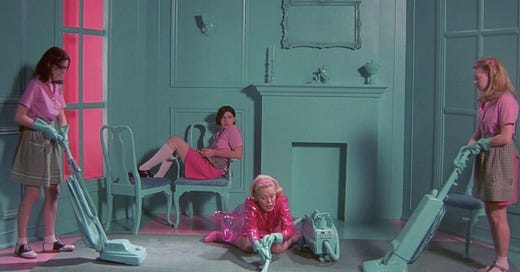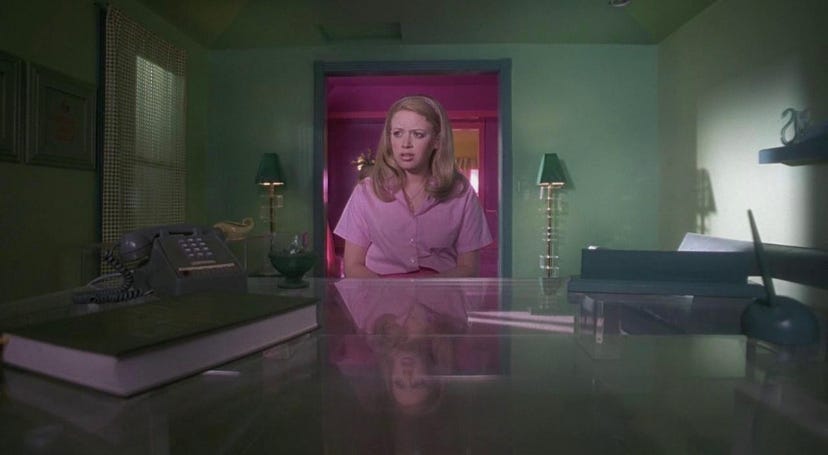Series: A Celebration of Films By Women - "But I'm a Cheerleader" (1999)
Day 29
Film: “But I’m a Cheerleader” (1999)
Director: Jamie Babbit
Writers: Brian Peterson, Jamie Babbit (story)
Stars: Natasha Lyonne, Clea DuVall, RuPaul, Cathy Moriarty, Eddie Cibrian, Melanie Lynskey, Dante Bosco
Synopsis: When high school cheerleader Megan’s (Natasha Lyonne) family and friends grow concerned at her lack of interest in her boyfriend, her vegetarianism, and love of Melissa Etheridge music, she is sent to a gay conversation therapy group home to rid her of her buddy homosexuality.
Why I Love This Film: “But I’m a Cheerleader” is peak queer cinema. Spoiler alert: no one dies, and while it does not sugarcoat what it was like to be gay in the 90’s, it also doesn’t make it hella depressing. Jamie Babbit knew what she was doing by making this satire about conversation therapy camps. With her direction, cinematography by Jules Labartha, an almost hyper-saturated feel adds to the hyper-satirical nature of the film. The film has an almost dreamlike feel to it, as it tackles queerness and anti-queerness at that moment of history.

Babbit weaves in the stark realities of being queer in the late-90’s, while highlighting the absurdity of it all. I think one of the standout scenes that is both hilarious and also deranged is when the group of teens have to wear flesh-colored suits and simulate heteronormative sex as proof they have been cured of their “gayness”. It is both ludicrous while also being horrifyingly believable. And there are instances peppered in throughout the film, like the way gender norms are encouraged and seen as a sign of “straightness” rather than just societally determined tasks assigned in the gender binary.
In the titular cheerleader role, Natasha Lyonne is fantastic. Lyonne has always had great comedic timing, but in this film, she is paired with Clea DuVall who brings out the best in Lyonne. DuVall and Lyonne remain friends to this day, which is also super neat. Onscreen, the two actors have great chemistry. Whether their characters are at odds or absolutely in-tune, the pair understand how to play off of each other while remaining true to their characters is just perfection. Seeing two queer women as similar sides to the same coin is a very compelling depiction to see in a film.
“But I’m a Cheerleader” also highlights the real dangers of coming out. Some characters face being disowned by their families, as teenagers, as children. At one point in the film, one of the characters runs away from the camp and is housed by two gay men who are actively attempting to save the queer kids at the conversation therapy camp. I cannot help but wonder if this sense of community, this need to keep these queer kids safe also had to do with the HIV/AIDS epidemic. 1999 still saw stigmatization of LGBTQ+ people because of HIV/AIDS. From the onset of the disease in America through the mid-90’s, the HIV infection rate and AIDS-related death rates steadily increased until about 1994 where began a decline in both infection and death rates. This film came out 5 years after the decline began to occur which was after a decade of an entire community being ravaged by this disease. While “But I’m a Cheerleader” does not tackle the HIV/AIDS epidemic in the U.S. directly, it is certainly shaped by it.
Babbit’s feature directorial debut has always been a masterpiece. Even with the advances in understanding sexuality, gender identity, and gender expression, “But I’m a Cheerleader” sadly remains relevant in some aspects. We may have made significant progress in the last 23 years, but there is still progress to be had.
Where This Film Can Be Found: Tribeca Shortlist



